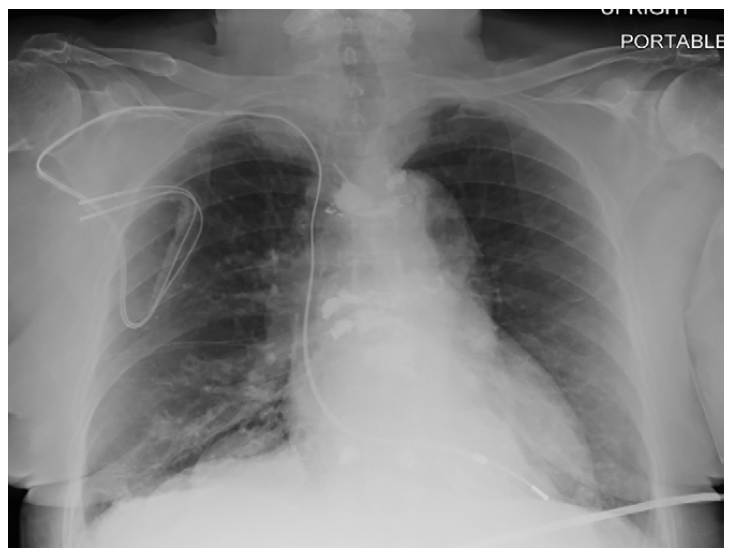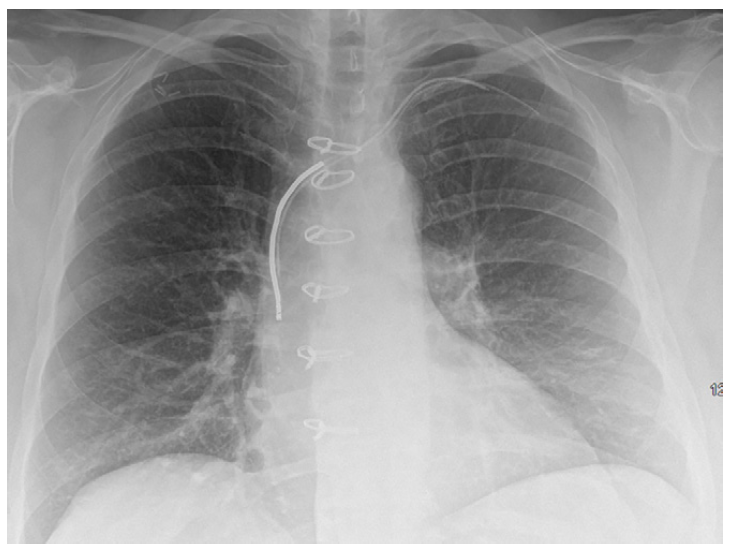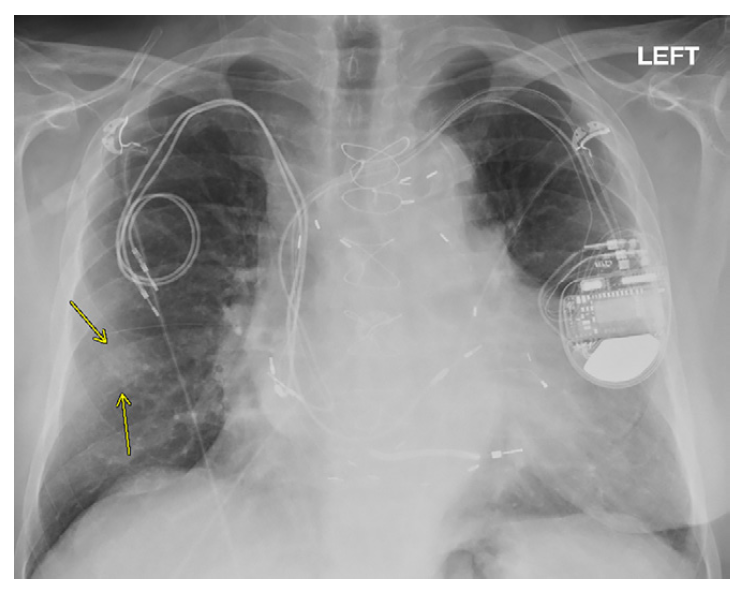MRI Is Safe for Pacemaker Patients, Opening the Door for Needed Exams
Study shows MRI exams can be safely performed with no adverse events in patients who have non-MR conditional devices, making the exams available for patients who frequently needs these studies the most.
Contrary to conventional belief, MRI exams can be performed safely in patients who have non-MR-conditional cardiac devices, including patients who are pacemaker-dependent or who have abandoned leads.
More than 2 million patients have cardiovascular implantable electronic devices (CIEDs), such as pacemakers and implantable cardioverter defibrillators (ICDs), and they are a patient group who most often could benefit clinically from having an MRI exam. Until now, though, providers have been forced to choose between finding an alternative, less-effective imaging for the chest or removing a necessary cardiac device.
But, in a study published Oct. 22 in Radiology: Cardiothoracic Imaging, a multi-institutional team of investigators has outlined it is, in fact, safe to conduct an MRI with these patients – and it can be done without a negative outcome.
Figure 4: Chest radiograph, posteroanterior view, in a 64-year-old woman with history of heart transplantation, demonstrates retained portion of right ventricular pacing lead and defibrillator lead with superior vena cava coil. This patient underwent five MRI examinations as part of this registry. Courtesy: Radiology: Cardiothoracic Imaging

“We found no serious adverse consequences of performing MRI examinations, including cardiac MRI examinations, in a large consecutive cohort of patients with non-MRI-conditional CIEDs,” said the team led by Sanjaya K. Gupta, M.D., a cardiologist with Saint Luke’s Mid America Heart Institute in Kansas City, Missouri.
Related Content: 3 Tips to Improve MR Safety with Implants and Devices
Previous studies have shown MRIs can be safely conducted in patients with non-MR conditional devices, but this study goes further to include patients whose hearts will stop beating if their defibrillator ceases to work, as well as those who have abandoned or fractured wires that are no longer connected to their heart.
While many CIEDs have been deemed safe for MRI imaging by the U.S. Food & Drug Administration, pacemakers and ICDs have fallen outside this category. This study opens the door for more imaging options, Gupta said.
“While all devices implanted in patients today are MRI compatible, millions of people worldwide, including many young people, have older devices considered not compatible,” he said. “It’s unfair to tell these people that they can’t get an MRI for the rest of their lives.”
Figure 6: Chest radiograph, posteroanterior view, in an 85-year-old woman with history of previous pacemaker that was explanted and retained right ventricular pacing lead. There is evidence of vertebroplasties at multiple levels. Courtesy: Radiology: Cardiothoracic Imaging

In fact, he added, the impetus behind this study was a patient with a brain tumor who was unable to undergo MRI exams that were critically needed during her treatment because her pacemaker was not MR conditional. Due to the lack of scans, the patient were forced to undergo several risky surgical procedures, he said.
Consequently, to better understand the risks posed by MRI to these patients, Gupta’s team created the Patient Registry of Magnetic Resonance Imaging in Non-Approved Devices (PROMeNADe) that included 532 patients who underwent 608 MRI exams, including 61 cardiac MRIs between September 2015 and June 2019. Participants in this study included individuals from groups that had not been incorporated into previous studies.
Figure 7: Chest radiograph, posteroanterior view, in a 79-year-old man with history of previous pacemaker, with abandoned right atrial and right ventricular pacing leads on the right side at time of new cardiac resynchronization therapy defibrillator implant on the left side. Arrows indicate a nodular opacity in the right midlung concerning for mass. Courtesy: Radiology: Cardiothoracic Imaging

Notably, the team said, their registry is the largest series of MRI exams collected in patients with pacemaker-dependent ICDs, the second largest for patients with abandoned or fractured leads, and the third largest in non-compatible devices.
Of the participant group, 36 percent were referred for an MRI by a neurologist, and 20 percent were referred by a cardiologist. In particular, 161 exams (26 percent) were conducted on pacemaker-dependent patients – 43 were defibrillator, 14 were dual-chamber ICDs, and 29 were cardiac resynchronization therapy defibrillators. These devices were manufactured by Medtronic, Abbott/St. Jude Medical, and Boston Scientific. The remaining patients had pacemakers and CRT pacemakers.
Throughout the study, not only did a nurse closely monitor each patient’s vital signs during their time in the scanner, but the team also evaluated every device both before and after the MRI. Pacemaker-dependent patients had their devices turned to asynchronous mode before entering the scanner, and tachycardia therapies were disabled in ICD patients during the MRI.
The team also followed up with the patients after six months post-MRI. According to their results, MRIs – including chest MRIs – are safe to conduct in pacemaker-dependent ICD patients, as well as those who have non-MR conditional devices or abandoned leads.
“There were no adverse events,” Gupta said, noting that 14 percent of patients had multiple MRI exams. “The protocol worked amazingly well. We had no issues with any of the patients and no harm to the devices.”
Alongside being safe to perform, the team determined these exams also had a clinical impact that altered patient care. Based on a survey conducted with 150 of the referring physicians, the outcomes of the MRI exams for both patients undergoing cardiac and non-cardiac MRIs changed a suspected diagnosis 25 percent of the time and the suspected prognosis in 26 percent of participants. In addition, the scans led to different medical or surgical treatment plans 42 percent of the time.
The team did note their study had some limitations. It was not able to determine the safety of MRI studies in patients who had their devices implanted within six weeks of the scan. They also did not examine hemodynamically unstable patients, patients who required recent defibrillator therapy, or patients for whom the referring clinician felt it unwise to turn off arrhythmia detection during the scan.
Still, they said, these results could open the door for more people who could benefit from these studies to undergo them without fear of safety risks.
“We’re hopeful that our work will add support to expand the FDA’s indications for devices that are considered MRI-compatible,” Gupta said. “A lot of work went into this study, but it’s worth it when you consider all the lives impacted.”
For more coverage based on industry expert insights and research, subscribe to the Diagnostic Imaging e-Newsletter here.
Meta-Analysis Shows No Difference Between bpMRI and mpMRI in Ruling Out csPCa
March 6th 2025In an 18-study meta-analysis involving over 4,600 patients, researchers found that bpMRI and mpMRI had equivalent pooled negative predictive value (NPV) of 92 percent for clinically significant prostate cancer (csPCa).
Is MRI Contrast Enhancement Necessary for Long-Term Monitoring of Diffuse Glioma?
March 4th 2025In a comparison of contrast-enhanced T1-weighted (CET1w) MRI (and T2-weighted MRI/FLAIR imaging, researchers found that only three out of 82 cases of glioma progression were solely detected with CET1w MRI.
Can Deep Learning Ultra-Fast bpMRI Have an Impact in Prostate Cancer Imaging?
March 3rd 2025A deep learning-enhanced ultra-fast bpMRI protocol offered similar sensitivity for csPCa as mpMRI with an 80 percent reduction in scan time, according to research findings presented at the European Congress of Radiology (ECR) conference.